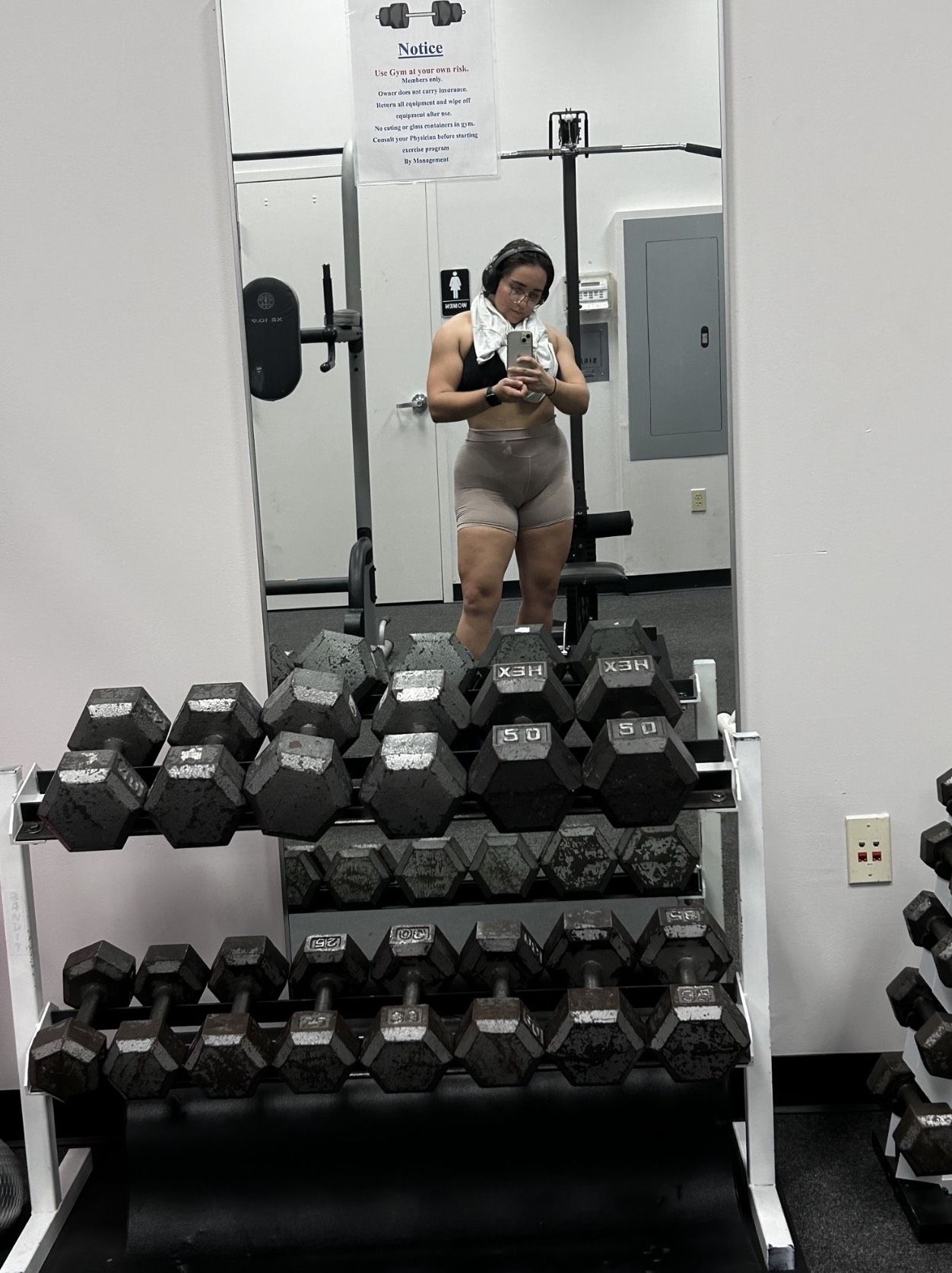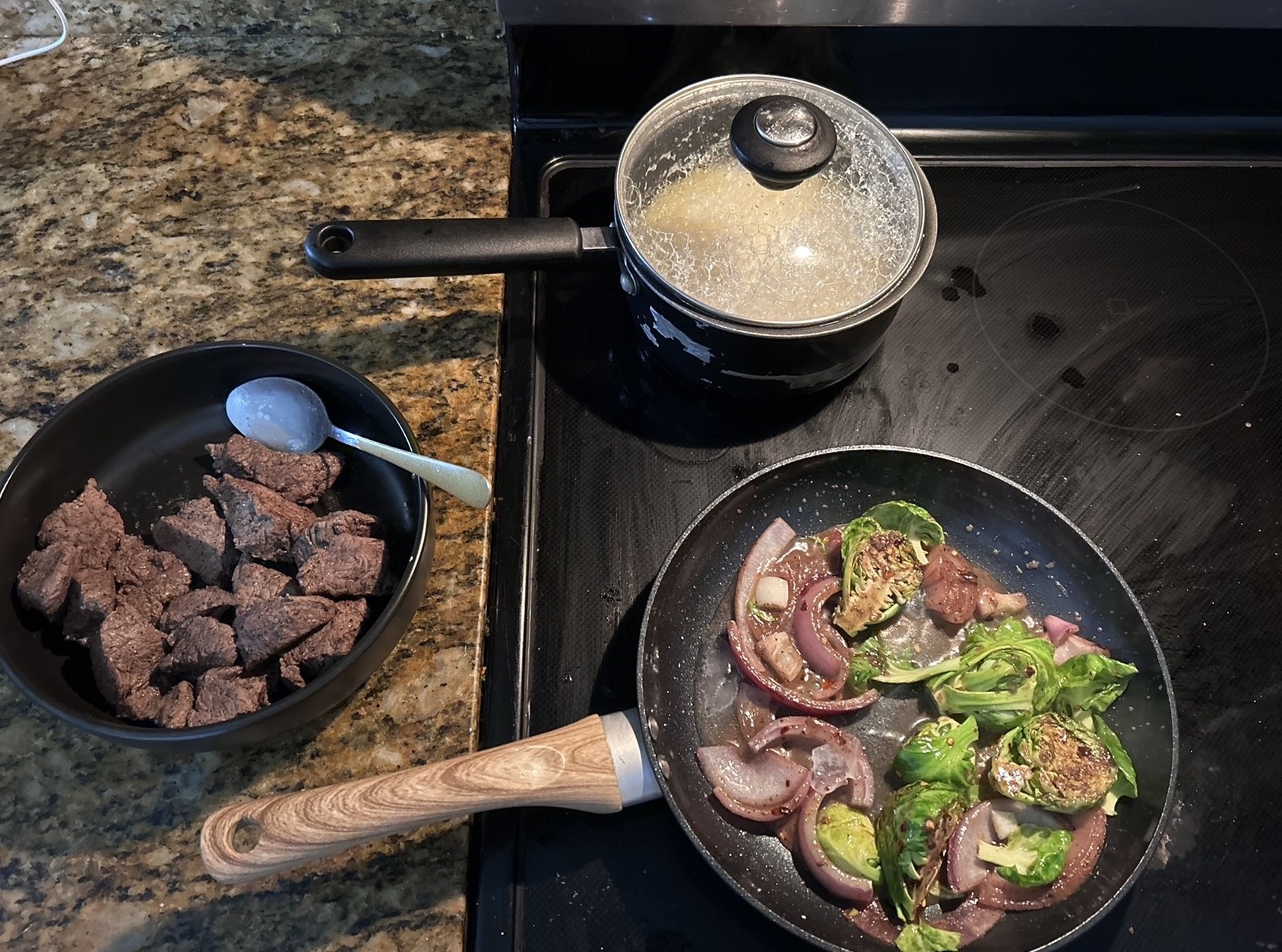By Lillian Khanna
http://www.khannahousestudios.com
Fear shouldn’t be part of your health journey and scaring yourself into weight loss isn’t sustainable or healthy – mentally or physically.
You aren’t going to war and don’t need a “last meal” or “one last drink” before starving yourself for the next eight weeks. You don’t need to cancel plans and you definitely don’t need to spend hundreds to gear up for a new Olympic weightlifting hobby.
Weight loss – especially for women – has been an unnecessarily restrictive and difficult process. The misinformation that clouds this very scientific process makes reaching a sustainable end goal harder than it should be.
I lost 100 pounds in a little over a year. I ate four times a day, went to school, worked a full time job, had time to move my body, went on vacations and celebrated plenty of special occasions all without compromising the end goal of getting my weight under control and feeling better about my food choices and overall health.

This only happened after I got rid of the false understanding of weight loss, so I want to end the gatekeeping and provide clarity in the hopes that anyone seeking to embark on their own health journey knows that it is possible without resorting to extreme measures.
- Myth #1: All carbs are bad, and I need to cut them out in order to lose weight.
The premise of most “diets” is to restrict a food group in order to stay in a calorie deficit – eating less calories than your weekly caloric expenditure.
Carbohydrates have received a bad rap for one main reason – not all calories are made the same. The carbs that we generally consume are empty calories that provide little nutritional value and typically come in the form of muffins, bagels, processed white bread and the like.
I recommend swapping these low-value foods to higher value items such as roasted sweet potatoes, white potatoes, rice (of all sizes and colors) and oats in portions about the size of your fist. These “good” carbs help fuel our day and give us the energy we need.
When looking at popular diets like Whole 30, Paleo, and Keto, the idea is to restrict a food group like fats or grains. However, if you know how to portion and pick, you won’t need to restrict (Haha, that rhymes!).
- Myth #2: Being hungry burns fat.

In addition to being false, this is also a dangerous mindset. Being chronically hungry and continuously under-eating sends your body into survival mode.
The goal of being in the calorie deficit is to decrease your caloric intake, not to drop your caloric intake so low that it wreaks havoc on your body.
It’s a slow burning (pun intended) process that happens over weeks. While you may experience some hunger and decreased energy while eating in a calorie deficit, you should not be experiencing severe hunger and plummeting energy levels.
Under-nourishing your body for an extended period of time will actually cause your metabolism to slow and you will burn fewer calories for fear that you’re experiencing starvation. In extreme cases, your body will take energy from the reserves of your muscle mass and you won’t burn any fat.
- Myth #3: Fast food is fattening
One of the most difficult parts was sticking to the change of eating and the lifestyle that comes with it. It’s less cooking and eating and more the time spent on these activities and having to schedule when in the past, you could just hit up the drive-thru.
I understand and that’s why I think it’s fine to eat a fast food meal or two once a week, but under one condition – learn how to read a menu and build a plate.
I’m a chronic soda drinker. I absolutely love it and I didn’t want to give it up when I made my lifestyle change.
So I didn’t.
I just made a swap from a full sugar Coca-Cola at 140 calories per 12oz can to a Diet Coke which had 0 calories, regardless of serving size.
Instead of the fried chicken nuggets at Chick-fil-A, I ordered a double portion of grilled chicken nuggets and switched my waffle fries for fruit cups.
With these simple swaps, I’ve created a filling meal for less than 800 calories with more than 40 grams of protein, all from a fast food chain.
Wherever I could increase protein and cut out empty calories, I did and that meant I felt fuller for longer. I also didn’t get the sugar and carb crash after consuming the fried meal I would have easily eaten at almost 300 pounds.
As Americans, we were not set up for success when it comes to the topic and access to nutrition.
We talk about generational wealth, what about generational health?
Making these changes now can change the trajectory of not only your life but the life of your family’s as well.
***
Lillian Khanna is an NPR & PBS affiliate station producer turned Khanna House Studios studio manager who has a love for all things video production, health + fitness, and travel!


